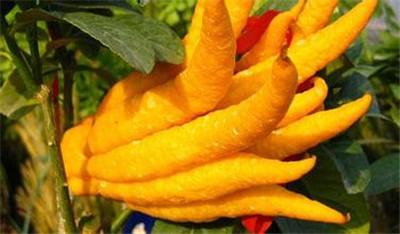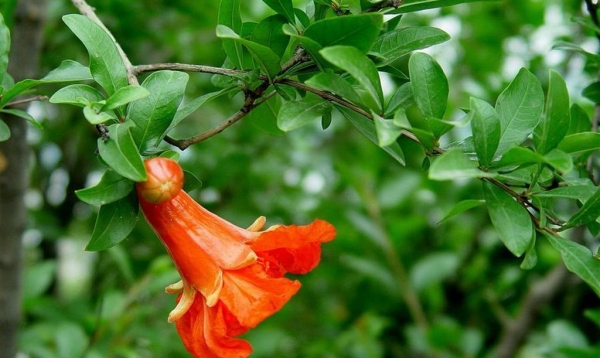Cultivation method of potted household chandelier hibiscus
1. Soil
The soil planted by chandelier mulberry should choose loose and fertile sandy loam, and the basin should be changed every early spring. Before changing the basin, new soil should be prepared, part of the overdense curled fibrous roots should be cut off, and enough basic fertilizer should be applied.
2. Lighting
The growth habit of chandelier mulberry requires it to receive sufficient sunlight, so it is best to put it in the balcony and other light, warm bad environment, not in the shade, otherwise it will affect the growth.
3. Temperature
Chandelier Fusang is a tropical plant, like high temperature, drought-resistant and not cold-resistant, in the northern areas of winter need to breed indoors, and should often receive light, maintain temperature, do a good job of warm measures.
4. Watering
Watering during the growing period should be adequate, and there should be no shortage of water or waterlogging. It is usually watered once a day, and once in the morning and evening in the summer. The ground is often sprinkled to moisturize and cool down to prevent young leaves from scorching and flowers from falling early.
5. Fertilization
In the growing period of chandelier mulberry, the demand for fertilizer is relatively strong, to strengthen fertilizer and water, apply fertilizer every 7 times every 10 days, pay attention to the application of dilute fertilizer after maturity, but try to reduce fertilization after autumn, so as not to produce autumn shoots.

Matters needing attention in pot culture of mulberry with family chandelier 1. Root-knot nematode disease
This is a widely distributed and serious disease, especially in the process of chandelier mulberry culture, when reddish-brown spots appear on the edge of the leaves. When expanding inward, be careful. At this time, soil replacement can be carried out and aldicarb granules can be applied to the new soil to eradicate the disease and insect pests.
2. Pruning
The chandelier helps mulberry grow fast, so pruning is a must. Pruning can be done before and after early spring. Each branch is pruned in addition to 2-3 buds at the base, and all the upper branches are cut. Pruning can promote new branches, grow more vigorously, and the plant shape is also beautiful.
After introducing the breeding methods and matters needing attention of chandelier Fusang, we must have a certain understanding of chandelier Fusang, and then we will learn more about the value of chandelier Fusang.
The main value of chandelier supporting mulberry culture method
We are all familiar with mulberry trees. Fusang is considered to be an auspicious tree. Chandelier Fusang is a kind of Fusang. Chandelier Fusang has large flowers and colorful colors, and the ornamental effect is excellent. How to raise Fusang by chandelier? What's the value? Let's take a look.
1. Chandelier mulberry culture method
1. Change the basin: loose and fertile sandy loam should be selected for pot use, and the basin should be changed before moving outside in early spring and April every year. Three things should be done when changing the basin: the first is to replace the new culture soil; the second is to cut off some of the overdense curly fibrous roots; the third is to apply sufficient base fertilizer and slightly add phosphate fertilizer to the bottom of the basin.
2.Illumination: Fusang is a positive tree species, which should be moved outside and placed in a sunny place at the beginning of May, which is also the growing season of Fusang, so it is necessary to strengthen the management of fertilizer and water, loosening soil, pulling grass and so on. Apply dilute liquid fertilizer every 7-10 days, watering should depend on the dry and wet condition of the basin soil, too dry or too wet will affect flowering. Lack of light, buds easy to fall off, flowers shrink, daily sunshine can not be less than 8 hours.
3. Water and fertilizer: Fusang has a great demand for fertilizer, so it is necessary to replenish light in time in cultivation. Potted mulberry plants, generally out of the house in April, change pots before leaving the house, appropriate shaping and pruning, in order to maintain a beautiful crown, watering during the growing period should be adequate, can not be short of water, can not be watered, usually once a day, summer days can be once in the morning and evening. The ground is often sprinkled to moisturize and cool down to prevent young leaves from scorching and flowers from falling early.
4. Temperature: Fusang is not resistant to frost. It must be moved into the room to keep warm after Frosts Descent and the Beginning of Winter. The overwintering temperature should not be less than 5 ℃ to avoid freezing injury, and not higher than 15 ℃ to avoid affecting dormancy. Poor dormancy, poor growth and blossom in the following year. Furniture houses with good thermal insulation conditions facing south can survive the winter and can be covered with paper or plastic film to keep warm when the weather is colder.
5. Pruning: in order to maintain a beautiful tree shape and a large amount of flowers, according to the strong ability of mulberry branches to sprout and tiller, pruning and shaping can be carried out before and after leaving the room in early spring, each branch except the base leaves 2-3 buds, the upper part is all cut, pruning can promote the development of new branches, the growth will be more exuberant, and the plant shape will also be beautiful. After pruning, due to the reduction of aboveground consumption, it is necessary to properly control water and fertilizer.
Second, the main value of chandelier supporting mulberry
The chandelier is a beautiful ornamental flower with large flowers, bright red colors and long flowering period. Potted mulberry is one of the best flowers for festive parks, flower beds, hotels, meeting places and families. Ye: detumescence. For axillary sores. In the south, Fusang is mostly planted by the pond, in front of the pavilion, beside the road and by the wall, and the safflower blossoms constantly throughout the year, which is very lively. The Yangtze River basin and the north often decorate balconies or small gardens with potted plants. Under the condition of sufficient light, the viewing period is particularly long. It is also one of the main flowering potted plants placed in public places in summer and autumn.
The above is the chandelier mulberry cultivation method and the chandelier supporting mulberry value introduction, chandelier supporting mulberry is a good ornamental potted plant, like friends can start breeding and have a look.
- Prev

Family farming methods of bergamot
1. Light management bergamot likes warm, humid and sunny environment, so it is necessary to ensure sufficient light. In addition, the most suitable growth temperature of bergamot is 22-24 degrees, so we should pay attention to temperature control. 2. Water management bergamot is resistant to waterlogging and drought, so it is necessary to water bergamot frequently
- Next

Culture methods of pomegranate flowers
When planting pomegranate flowers, it is best to choose to plant in spring, choose a high-quality seedling with complete root system and full bud eyes, plant it deeply in a clay basin, apply a certain amount of base fertilizer, and maintain it in the sun. The suitable environment for pomegranate flower growth is warm and humid environment.
Related
- Fuxing push coffee new agricultural production and marketing class: lack of small-scale processing plants
- Jujube rice field leisure farm deep ploughing Yilan for five years to create a space for organic food and play
- Nongyu Farm-A trial of organic papaya for brave women with advanced technology
- Four points for attention in the prevention and control of diseases and insect pests of edible fungi
- How to add nutrient solution to Edible Fungi
- Is there any good way to control edible fungus mites?
- Open Inoculation Technology of Edible Fungi
- Is there any clever way to use fertilizer for edible fungus in winter?
- What agents are used to kill the pathogens of edible fungi in the mushroom shed?
- Rapid drying of Edible Fungi

